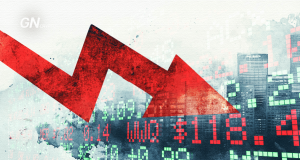The Big Shift: How Institutional Investors Embraced Digital Assets in 2024

Digital assets aren’t just for crypto geeks anymore. Wall Street’s finally caught on, and institutional investors are moving from crypto-curious to crypto-serious. Every other day, another big firm announces it’s “exploring digital assets” or doubling down on blockchain.
On this page
- The Year of the Institutional Investor
- Moving Beyond the “Crypto Winter”
- Sentiment Check: Long-Term Belief vs. Immediate Concerns
- The New Investment Playbook: Tokenization and Beyond
- Allocation Trends: Betting Big on Bitcoin ETPs and Stablecoins
- Bridging the Trust Gap: Why TradFi is Winning Over Digital Natives
- Regulation: The Elephant in the Room
- The Future of Institutional Adoption: Patience, Partnerships, and Expansion
- 2025 and Beyond—From the Fringe to the Foundation of Finance
The Year of the Institutional Investor
Gone are the days when Bitcoin was just “magic internet money”—2024 was the year that Wall Street officially RSVPed to the crypto party.
According to the Gaining Ground: How Institutional Investors Plan to Approach Digital Assets in 2024 study by EY-Parthenon, institutions aren’t just dipping a toe in the digital waters anymore.
They’re fully diving in.
Head to toe.
The report surveyed 277 decision-makers, and a whopping 94% believe blockchain and digital assets are here to stay. Not bad for a tech that was once the laughingstock of finance. And 79% of these investors aren’t just in it for kicks—they see digital assets as a key part of diversifying their portfolios.
This shift isn’t just about hopping on the latest trend.
It’s a well-thought-out move, a smart step to embrace digital assets in a world where market realities are changing fast. These folks are done with sitting on the sidelines—they want their slice of the blockchain pie. Digital assets have shaken off the “risky” label and are sliding right into the portfolios of some of the world’s biggest investors.
It's also worth noting that this study was conducted back in the summer of 2024. This means that at that time no one knew about BTC at $100,000. Additionally, Donald Trump's sure victory in the presidential race was not yet on the table.
Moving Beyond the “Crypto Winter”
Ah, the infamous “crypto winter”. A cold time, to say the least, marked by market collapses and rock-bottom confidence. But fast forward to 2024, and it seems crypto’s warming up. Memories of 2022’s FTX debacle may still sting, but institutions are finding that the rewards are now worth the risk, especially with digital assets being served up in a more familiar package.
What’s changed? Well, early in 2024, the U.S. Securities and Exchange Commission (SEC) approved Bitcoin ETPs (exchange-traded products).
Finally.
This approval gives traditional investors a regulated, secure way into the crypto market—without the headache of wallets, passwords, or tech jargon. For institutions that waited out the winter, Bitcoin ETPs are the best of both worlds: a way to invest in crypto that feels both familiar and safe. No wonder 62% of those surveyed prefer regulated products over standard crypto trading.
This shift toward regulated digital assets gives cautious investors a big confidence boost. These seasoned players don’t want to become blockchain experts—they want stability and returns. And now, they can have both without blowing up their investment philosophies. The brutal crypto winter may have left some bruises, but with new regulations, safer products, and growing investor confidence, digital assets seem ready to bloom in institutional portfolios.
Sentiment Check: Long-Term Belief vs. Immediate Concerns
If there’s one thing this Gaining Ground report made clear, it’s this: Institutional investors are no longer on the fence about digital assets. An impressive 94% of them believe in blockchain’s long-term value—a sentiment that would’ve been laughed out of the room a few years back.
So what’s fueling this optimism? First up, diversification.
Institutional investors are pros at balancing risk, and 79% of them see digital assets as essential for doing just that. In a world where bonds and stocks are swinging with inflation and interest rates, digital assets offer a way to balance the scales.
But don’t mistake their optimism for blind enthusiasm.
These investors are cautiously optimistic.
The data hints that while they’re open to crypto’s potential, they’re also wary of the volatility. They haven’t forgotten the so-called “crypto winter PTSD”—the market crashes, sensational hacks, and bad actors (yes, looking at you, FTX).
While nearly everyone sees a bright future for blockchain, they’re moving forward with caution, hedging bets against potential setbacks. Digital assets are finding their place alongside traditional investments, turning into less of a gamble and more of a calculated play for institutions.
The long-term belief in blockchain’s potential is clear, but it’s balanced with a healthy dose of pragmatism—just the right approach for 2025’s institutional investor.
The New Investment Playbook: Tokenization and Beyond
Tokenization. It’s the latest buzzword in finance, and for good reason.
The concept is simple but game-changing: take a traditional asset (like real estate, bonds, or art), break it into digital shares, and let investors buy a slice. For institutions, tokenization means having their cake and eating it too—it brings liquidity and accessibility, all while sticking to familiar asset classes.
Related: Tokenization of Real World Assets (RWA): A Comprehensive Review
In the survey, a solid 50% of respondents say they’re keen on tokenized assets, and it’s no wonder. Tokenization is a golden opportunity for institutions to diversify without shaking up their risk profiles. Instead of buying a whole office block, they can buy a fraction. It’s real estate exposure without the massive price tag. And it’s not limited to property—tokenized assets cover everything from commodities to corporate bonds.
But here’s the catch: while demand for tokenized assets is high, supply hasn’t kept up. Tokenized funds are still rare, and the regulatory landscape for tokenization isn’t exactly clear. It’s like institutions are ready to board the tokenization train, but the tracks aren’t quite in place. Tokenized assets could be the next big thing, but they’re not mainstream yet, and it may be a while before they are.
For now, it’s a waiting game. Institutions are watching closely, excited by the potential for liquidity, fractional ownership, and the chance to invest in previously illiquid assets.
Picture this: a pension fund holding a diverse basket of tokenized real estate, bonds, and even art. We’re not there yet, but the foundation is being laid.
Related: The First UK Pension Scheme Announced Investing in Bitcoin
Allocation Trends: Betting Big on Bitcoin ETPs and Stablecoins
When it comes to where institutions are putting their money, Bitcoin and stablecoins are the clear winners. The Gaining Ground survey found that 55% of institutional investors plan to increase their digital asset allocation in the next couple of years, with hedge funds leading the pack (65% plan to up their crypto game).
Bitcoin, once the “bad boy” of finance, is finally getting some respect.
Bitcoin ETPs, specifically, are the top choice for investors who want crypto exposure without the drama. These products offer a regulated, familiar structure, and in 2024, Bitcoin was looking more “blue-chip” than ever. It’s quite the transformation for an asset once dismissed as “magic internet money.”
But Bitcoin isn’t the only game in town. Stablecoins, particularly USDC, are gaining traction as a low-volatility way to hold digital assets. With inflation on the rise and interest rates fluctuating, stablecoins give institutions a dollar-pegged currency that’s stable. Think of it as a savings account without the traditional bank.
And then there’s Ethereum, which is fast becoming the backbone of DeFi (decentralized finance), catching the eye of investors eager to explore decentralized finance.
These allocations reveal a clear diversification strategy, balancing high-risk and stable assets. Institutions are bringing the same strategic thinking to crypto that they apply to traditional portfolios, hedging their bets in a space that’s evolving fast.
Bridging the Trust Gap: Why TradFi is Winning Over Digital Natives
When it comes to trust, institutions have spoken: they prefer TradFi (traditional finance) over crypto-native firms. In the Gaining Ground report, 47% of respondents say they’d rather work with established financial institutions for digital assets like custody and trading. It’s not just about familiarity; it’s about reputation. After FTX’s implosion and a few other scandals, traditional finance firms seem like the safer bet.
Why the preference for TradFi? It’s all about the security blanket of regulation and experience. TradFi firms have been around, survived recessions, and built reputations. Crypto-native firms, meanwhile, have a reputational hill to climb—thanks in no small part to FTX and other scandals. Even in a field that prides itself on disruption, there’s comfort in the reliability and safeguards that traditional finance offers.
But this trust doesn’t mean institutions are avoiding digital assets—they’re just choosing partners they know can be trusted. From high-quality custody solutions to prime brokerage services, TradFi firms are offering institutional investors the tools to step into the world of digital assets with confidence.
After all, when you’re managing billions, “better safe than sorry” is a pretty sensible motto.
Regulation: The Elephant in the Room
Now, let’s talk about the elephant in the room: regulation. Regulatory clarity (or the lack of it) is still a big hurdle for institutions interested in digital assets. The Gaining Ground report shows that 30% of investors are holding off on tokenized assets until regulations clear up. Everyone’s eyes are on the regulators, waiting to see how this plays out.
The regulatory scene in the U.S. is, let’s say, “evolving.” The SEC has approved Bitcoin Ethereum ETFs—a big win—but other areas remain tangled in red tape. This leaves some investors on the fence until they get a clearer picture.
Europe, meanwhile, seems a bit more organized with its Markets in Crypto-Assets Regulation (MiCA). MiCA sets a framework for digital assets across the EU, which provides the security institutions are looking for. For those tired of the regulatory drama in the U.S., Europe’s clearer stance on digital assets is more than a relief—it’s fast becoming the gold standard.
As we move into the next phase of institutional crypto adoption, all eyes are on the regulators. For now, though, the landscape remains murky, keeping eager institutions in a state of “hurry up and wait.”
The Future of Institutional Adoption: Patience, Partnerships, and Expansion
Despite the regulatory fog, institutional adoption of digital assets is pressing forward. The survey hints at a long game—65% of institutional asset managers expect digital ledger technology (DLT) and tokenized assets to play a role in portfolios by 2028. This isn’t a fad; institutions are gearing up for a digital shift that’s here to stay.
One key trend is the move towards partnerships. Nearly half (46%) of respondents say they want to team up with crypto-native firms. Entering the digital asset space is no small feat, and partnerships allow institutions to tap into crypto expertise without starting from scratch. TradFi giants and digital-native firms working together could reshape finance, combining blockchain’s innovation with traditional finance’s stability.
Looking ahead, tokenization could be a game-changer for asset allocation. It’s not just about diversification; it’s about accessibility and liquidity—two things that tokenization could bring to the table.
The road to full adoption isn’t a sprint; it’s a marathon. Institutions are taking a cautious approach, but make no mistake—they’re committed to the long haul. In the end, patience, partnerships, and regulatory evolution will likely make digital assets a cornerstone of institutional finance.
Related: Blockchain alternatives or types of distributed ledgers
2025 and Beyond—From the Fringe to the Foundation of Finance
As we close, one thing’s clear: digital assets aren’t just an “alternative” anymore. They’re set to become a fundamental part of global finance. The Gaining Ground report shows a shift—institutions aren’t asking if they should consider digital assets, but how much to allocate. From cautious Bitcoin ETPs to tokenization’s futuristic promise, digital assets are finding their place in the portfolios of big investors worldwide.
It’s been a winding road, but the message is clear: digital assets are here to stay. Whether for diversification, innovation, or simply to keep up with the times, institutions are turning to blockchain. 2024 might have been the year that changed it all, and it’s just the beginning of a much bigger shift.
The future of finance is digital, and if the trends tell us anything, institutions are all in. It’s not a matter of if digital assets will go mainstream—it’s simply a question of when.
The content on The Coinomist is for informational purposes only and should not be interpreted as financial advice. While we strive to provide accurate and up-to-date information, we do not guarantee the accuracy, completeness, or reliability of any content. Neither we accept liability for any errors or omissions in the information provided or for any financial losses incurred as a result of relying on this information. Actions based on this content are at your own risk. Always do your own research and consult a professional. See our Terms, Privacy Policy, and Disclaimers for more details.




































